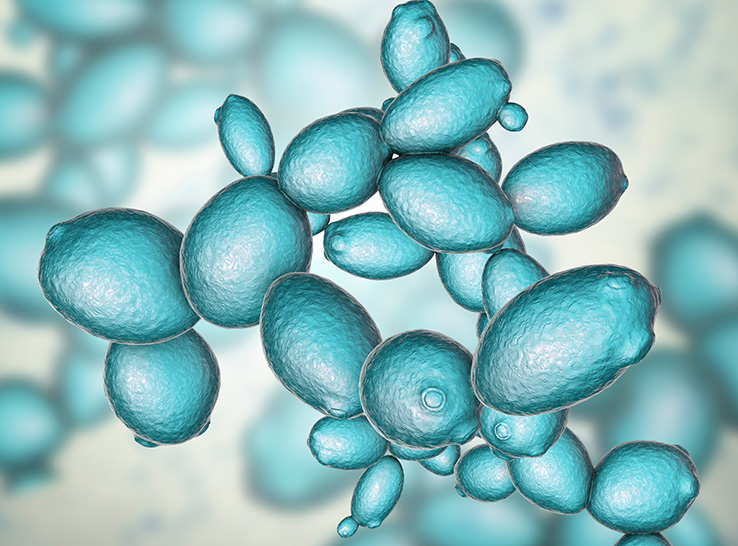A postbiotic containing the phytogenic substance saponin could assist as a useful tool to help broiler producers reduce the impact of Avian pathogenic Escherichia coli (APEC), which causes colibacillosis.
APEC is a considerable source of economic losses and health and welfare issues in the poultry production industry. Risk management strategies against the pathogen tend to be multi-faceted, involving biosecurity and veterinary medical interventions.
Because APEC tends to be opportunistic, good management practices, including biosecurity, health programs and sanitation, are the first step producers should take to prevent infection. Where this fails, vaccination against the pathogen is critical. But producers are also using the many feed supplements that are available to support flock health.
Research has shown that postbiotics derived from proprietary fermentations with Saccharomyces cerevisiae can positively affect production performance, immune function, modulation of the microbiome and health.1 Additional benefits include reduced colonization potential of foodborne harmful bacteria such as Salmonella and Campylobacter.2]
Tests have also shown that saponin feed additives derived from the soap bark tree (Quillaja Saponaria) have considerable potential for providing support against microbial challenges in poultry.3
Testing postbiotic with saponin on infection severity
Work led by Evan Chaney, PhD, Cargill’s Micronutrition and Health Solutions Food Safety Technology Lead, and his colleagues, set out to establish whether a combination of S. cerevisiae-derived postbiotic with saponin could be effective in reducing the severity of APEC infection.
They examined the potential of a prototype postbiotic with saponin, Dia-V®PTPLUS from Diamond V, with and without live E. coli vaccine, to reduce the severity of disease in a challenge study using an APEC serotype O78 isolate.
The team of scientists randomly allocated 600 male broilers to five treatment groups, feeding them a basal diet with or without the postbiotic prototype, or a live, attenuated E. coli vaccine treatment or not. Then, they challenged the birds with the APEC pathogen via the intratracheal route at day 28.
To understand the effects of the different treatments, they necropsied five birds per pen day 35 during acute infection to conduct lesion scoring for the main clinical signs of colibacillosis and to collect blood and tissue samples.
At day 42, the study’s termination, the researchers necropsied the remaining birds and collected blood and tissue samples. Tissue samples were sent to the University of Minnesota for microbiological analyses, and blood samples were sent to Cargill’s Elk River Minnesota research center for cytokine analyses.
Treatment supports the immune system
All treatments generally improved mean lesion scores for perihepatitis, pericarditis and air sacculitis, compared to challenged controls. Cumulative mean lesion scores were lowest when the postbiotic prototype was used, with and without vaccination, both showing trends approaching statistical significance at p <0.10.
The researchers observed that, compared to the challenged control, using the postbiotic prototype feed supplement alone resulted in a significant reduction (p <0.05) in perihepatitis lesions, as well as an improved lesion score approaching statistical significance for pericarditis (p < 0.10) and a numerical improvement in air sacculitis.
Looking at the effects of using vaccination alone, the team recorded numerical improvements in perihepatitis and pericarditis lesion scores, which approached significance in the case of air sacculitis (p <0.10). Finally, when using the postbiotic prototype and vaccine, they observed trends of numerical improvement for the three clinical signs, all approaching significance (p <0.10).
“We’re still trying to uncover exactly how postbiotics work, but our research has identified three areas of potential improvement: modulation of the gut microbiome, health of the epithelial tissue in the gut and modulation of the immune system,” Chaney explained.
“I think what we’re seeing here is that feeding DiaV PT Plus causes changes in the gut that impact the immune system. These changes apparently have the same magnitude of effect or stimulation that the vaccine was able to accomplish in this particular disease model.”
The researchers also observed lower mean APEC loads in liver and lung tissue and a reduced percentage of APEC-positive heart swabs when using the postbiotic prototype.
All treatments resulted in greater observed livability when compared to the challenged control. By day 42 of the study, the challenged treatment groups were largely indistinguishable from the unchallenged controls, except in terms of mean air sacculitis lesion scores, which suggested overall support for recovery from the APEC O78 challenge.
Varied approach may offer producers increased confidence
“Clinical APEC costs poultry producers tens of millions of dollars globally every year, and poses serious health and welfare issues for birds. What’s more, there are research groups investigating potential zoonotic food safety risks. Any interventions that can help reduce clinical disease risk and pathogen burden in poultry production should be explored,” said Chaney.
“From our research, there is evidence to suggest that the unique postbiotic with saponin blend could be a viable addition to producer’s toolboxes in maintaining the health of birds. As well as reduced lesions and lower pathogen loads, all the treatments tested in the study were observed to improve birds’ livability compared to controls, which is a fundamental consideration when introducing a new product to health maintenance and disease management strategies.”
Further work might explore the impact of the postbiotic with saponin against a challenge by multiple APEC strains, and with greater numbers of animals. More in-depth analysis of immune responses could shed light on the mode of action involved in the health effects by including the novel additives in birds’ diets.
APEC is a very diverse group of E. coli pathogens, with many strains that can cause disease. Chaney noted that this may limit the protection by vaccination strategies alone, particularly against those unknown or emerging APEC strains. For producers, a product like the one used in this study could potentially provide additional peace of mind while delivering the proven performance benefits of the core postbiotic.
1 Lin, J., Comi, M., Vera, P., Alessandro, A., Qiu, K., Wang, J., … & Zhang, H. J. (2023). Effects of Saccharomyces cerevisiae hydrolysate on growth performance, immunity function, and intestinal health in broilers. Poultry Science, 102(1), 102237.
2 Chaney, W. E., Naqvi, S. A., Gutierrez, M., Gernat, A., Johnson, T. J., & Petry, D. (2022). Dietary inclusion of a saccharomyces cerevisiae-derived postbiotic is associated with lower salmonella enterica burden in broiler chickens on a commercial farm in Honduras. Microorganisms, 10(3), 544.
3 Cheeke, P. R. (2009). Applications of saponins as feed additives in poultry production.








